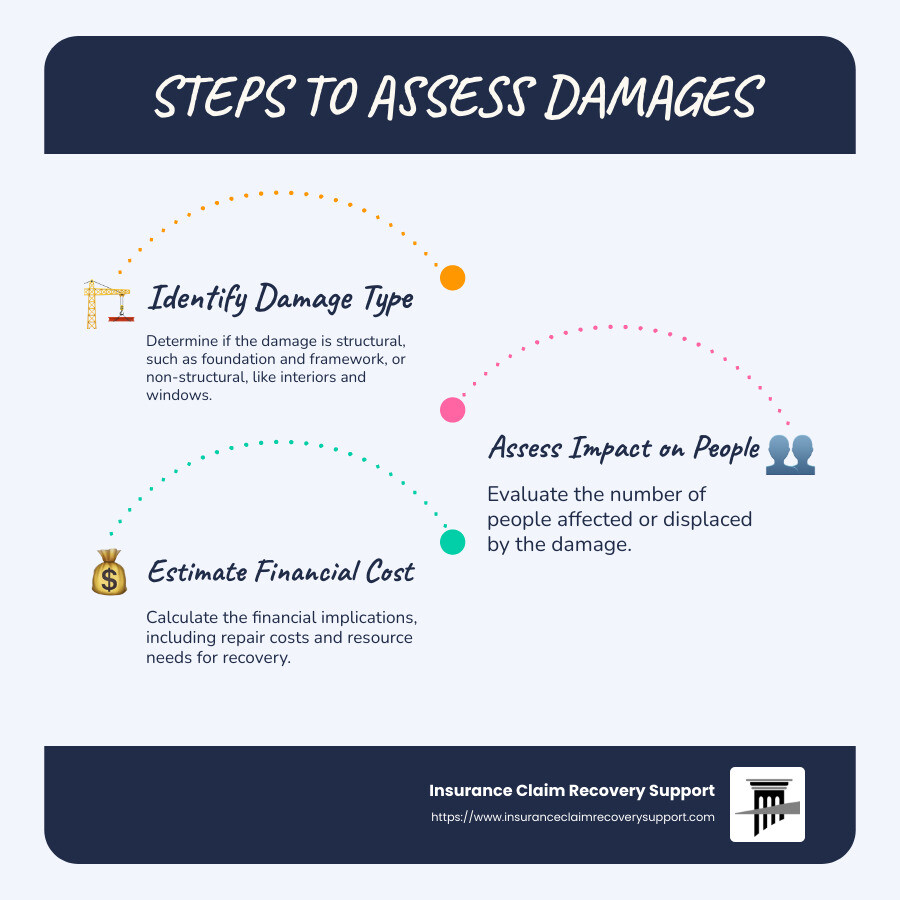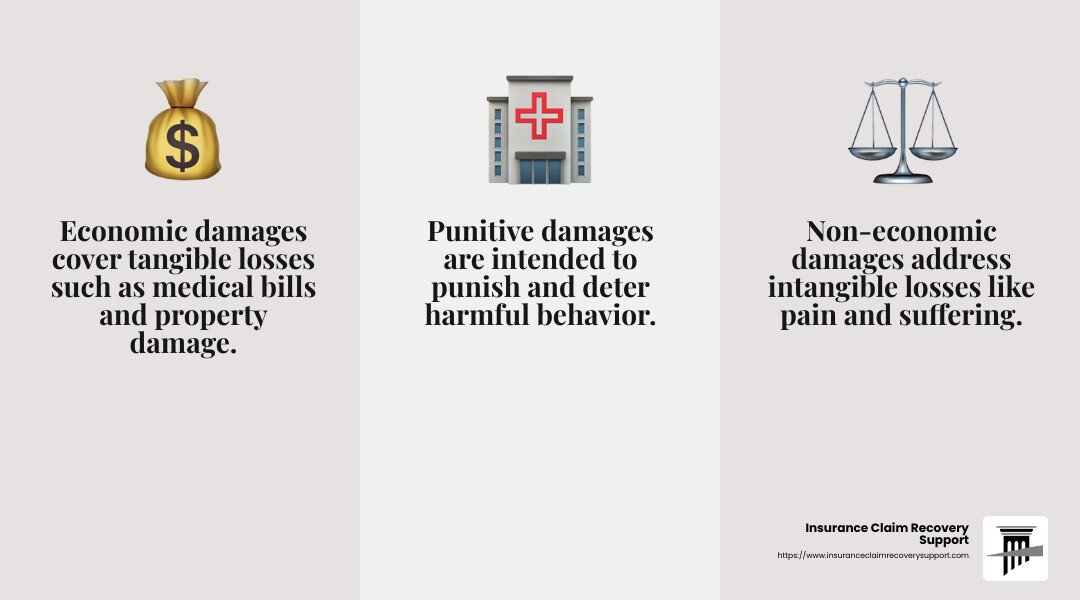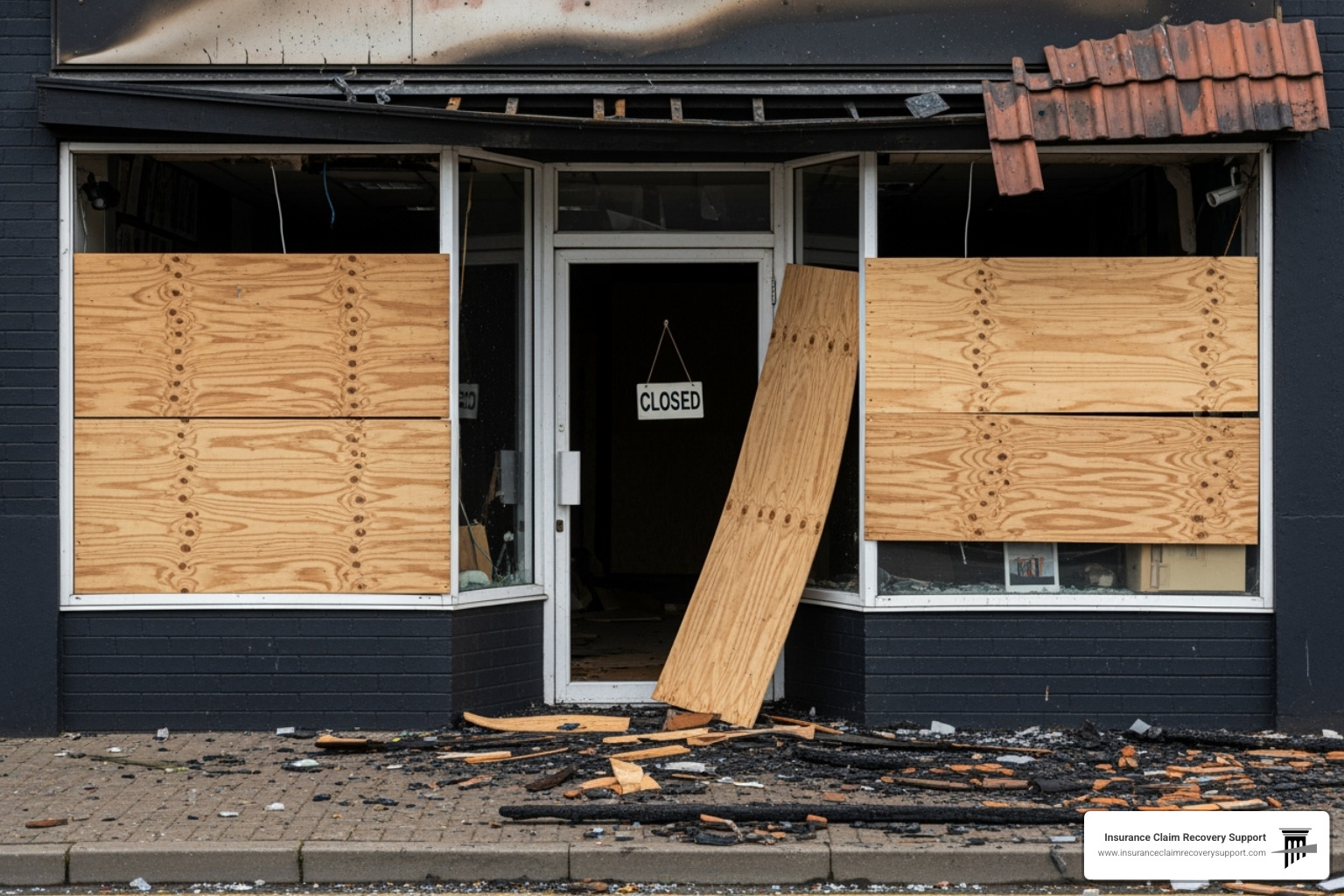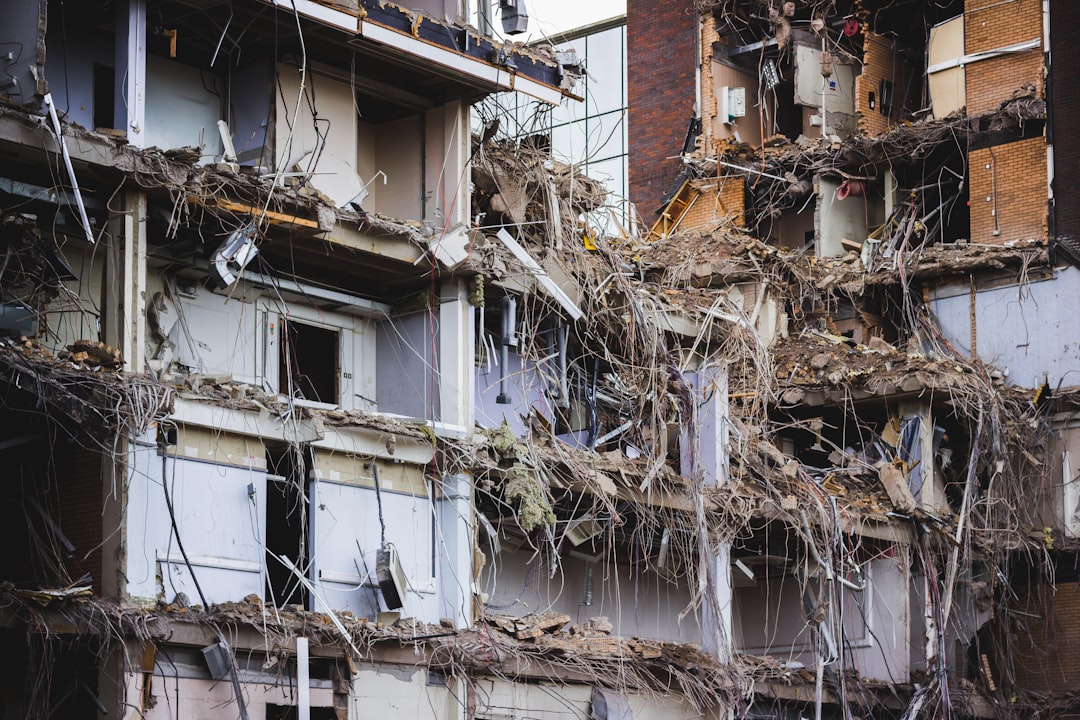Assess the damages—an essential step that entails evaluating the extent of damage after a disaster, to get a clear picture of what needs to be addressed. Start by examining these key elements:
- Type of Damage: Identify whether it’s structural, affecting the building’s core, or non-structural, impacting elements like windows or interiors.
- Impact on People: Determine the number of people affected or displaced.
- Resource Needs: Identify any additional resources necessary for recovery.
- Financial Cost: Estimate the financial implications of the damage.
Taking swift action not only mitigates further loss but also strengthens your position when filing insurance claims. This process not only helps assess immediate needs but also plans for future prevention and repair.
I’m Scott Friedson, CEO and licensed public adjuster at ICRS LLC. With experience settling over $250,000,000 in claims, my goal is to provide property owners with the knowledge to accurately assess the damages and ensure fair insurance settlements. Transitioning from identifying damage to navigating insurance, we ensure you are well-positioned for recovery.

Understanding Different Types of Damages
When you’re navigating insurance claims, understanding the different types of damages is crucial. Each type of damage serves a specific purpose and can significantly impact the outcome of a claim.
Civil Damages
Civil damages are monetary awards granted to a plaintiff to compensate for losses or injuries caused by the defendant’s actions. These damages aim to restore the injured party to the position they were in before the harm occurred.
Compensatory Damages
Compensatory damages are designed to make the injured party whole again. They are divided into two main categories:
Economic Damages: These cover tangible losses like medical bills, lost wages, and property damage. For instance, if a car accident results in a $5,000 repair bill, economic damages would cover that cost.
Non-Economic Damages: These address intangible losses such as pain and suffering, emotional distress, and loss of enjoyment of life. While harder to quantify, they are vital for acknowledging the full impact of an injury.
Punitive Damages
Unlike compensatory damages, punitive damages are not intended to compensate the victim. Instead, they aim to punish the wrongdoer for particularly harmful behavior and deter similar actions in the future. These are awarded in cases where the defendant’s conduct was especially egregious.
Liquidated and Unliquidated Damages
Liquidated Damages: These are pre-determined amounts specified within a contract, intended to cover losses in the event of a breach. They provide certainty and reduce the need for litigation.
Unliquidated Damages: Unlike liquidated damages, unliquidated damages are not specified in the contract and are determined by the court based on the actual harm suffered.
General and Specific Damages
General Damages: These are presumed by law to result from the defendant’s actions and do not need to be specifically proven. They include pain and suffering or loss of companionship.
Specific Damages: These require concrete evidence and cover quantifiable losses like medical expenses or repair costs.
Substantial, Nominal, and Exemplary Damages
Substantial Damages: Awarded when there is a significant loss or injury, these damages aim to provide adequate settlement.
Nominal Damages: These are symbolic and awarded when a legal wrong has occurred, but no actual damage was suffered. They serve to recognize the infringement of rights.
Exemplary Damages: Also known as punitive damages, these are granted in cases of malicious or willful misconduct. They go beyond settlement to serve as a warning to others.
Understanding these various types of damages is essential for anyone involved in an insurance claim or legal dispute. They define the scope and potential outcomes of a case, ensuring that all losses are appropriately addressed.

Steps to Assess the Damages
When it comes to assessing damages, a systematic approach is essential. This ensures that all aspects of the loss are considered, leading to fair settlement. Here’s a breakdown of the key steps involved:
Investigating the Cause
The first step is to determine what caused the incident. This involves looking into the details of the event to identify any negligence or liability. Was the damage due to a natural disaster, an accident, or someone’s careless actions? Understanding the cause is crucial as it influences who is responsible for the damages.
Documenting the Damage
Accurate documentation is vital. Photos and videos provide visual evidence of the damage. Take shots from multiple angles to capture the full extent. Written reports should accompany these images, detailing the nature and severity of the damage. This creates a comprehensive record that can be used in claims or legal proceedings.
Collecting Evidence
Gathering evidence strengthens your case. This includes:
- Witness Statements: Accounts from people who saw what happened can provide valuable insights.
- Medical Records: If there are injuries, these records document the harm suffered.
- Repair Estimates: Get multiple quotes to understand the cost of fixing the damage. This helps in claiming the correct amount.
Consulting Experts
Sometimes, you need professionals to provide a detailed assessment. Engineers can evaluate structural damage, while contractors offer repair insights. Medical professionals assess injuries. Their expertise ensures that all damage aspects are thoroughly evaluated and documented.
Quantifying the Damage
Finally, it’s time to put a value on the damages. This includes both financial losses (like repair costs and medical bills) and non-financial losses (such as pain and suffering). Understanding the difference between economic damages (tangible and quantifiable) and non-economic damages (intangible and subjective) is key to ensuring comprehensive settlement.
By following these steps, you can ensure a thorough and accurate damage assessment, paving the way for fair settlement and recovery.
Assessing Damages in Personal Injury Cases
When dealing with personal injury cases, it’s crucial to assess the damages accurately. These damages are divided into three main categories: economic damages, non-economic damages, and punitive damages.
Economic Damages
Economic damages are the tangible financial losses that result from an injury. They can be easily quantified and documented. Here are some common types:
Medical Bills: These include expenses for hospital visits, doctor consultations, surgeries, medications, and rehabilitation. Accurate records of all medical expenses are critical for calculating these damages.
Property Damage: If the injury occurred in an incident that also damaged personal property, such as a car accident, the cost of repairing or replacing the property is included.
Lost Wages: If the injury prevents you from working, you may claim settlement for the income lost during recovery. This includes not only the salary but also any benefits you would have received.
Lost Earning Capacity: In cases where the injury leads to a long-term or permanent disability, the victim might not be able to return to their previous job or earn at the same level. This loss of future earning potential is a significant factor.
Transportation Costs: Expenses for traveling to medical appointments or using alternative transportation methods if your vehicle was damaged are also considered.
Domestic Services: If the injury requires hiring help for household tasks, such as cleaning or childcare, these costs can be claimed.
Non-Economic Damages
Unlike economic damages, non-economic damages are more subjective and harder to quantify. They compensate for the intangible losses suffered due to an injury:
Pain and Suffering: This covers the physical discomfort and emotional distress experienced as a result of the injury.
Loss of Enjoyment of Life: If the injury prevents you from enjoying hobbies or activities you once loved, this loss can be compensated.
Disfigurement: Any permanent scars or physical changes resulting from the injury fall under this category.
Emotional Anguish: The psychological impact, such as anxiety or depression, caused by the injury is considered here.
Permanent Disability: If the injury leads to lasting impairment, it can significantly affect your quality of life.
Loss of Consortium: This refers to the impact on relationships, such as the loss of companionship or support from a spouse or partner.
Punitive Damages
Punitive damages are not about compensating the victim but punishing the wrongdoer. They are awarded in cases where the defendant’s behavior was particularly egregious or malicious. The purpose is to deter similar actions in the future.
Purpose: To penalize the defendant for their conduct and prevent others from engaging in similar behavior.
Criteria: These damages are only awarded if the defendant’s actions were intentional or grossly negligent.
State Laws and Caps: The application of punitive damages varies by state, with many states imposing caps on the amount that can be awarded.
By understanding these categories, victims can ensure that they seek comprehensive settlement for both measurable and immeasurable losses. This thorough approach is essential for achieving justice and facilitating recovery.
Assessing Damages in Property Damage Claims
When it comes to property damage claims, accurately assessing the damages is crucial for obtaining the settlement needed to restore or replace what was lost. This section will walk you through the essential elements of evaluating damages related to fires, storms, and tornadoes.
Fire Damage
Fire damage can be devastating, affecting both the structure of a property and its contents. The key areas to assess include:
Structural Damage: Fires can weaken or destroy the structural integrity of a building. This includes damage to walls, floors, and the roof. It’s important to have a professional inspection to determine the extent of the damage and what repairs are necessary.
Smoke Damage: Even if a fire doesn’t completely destroy a property, smoke can infiltrate and damage walls, ceilings, and personal belongings. Cleaning and deodorizing these areas can be costly.
Repair and Replacement Costs: Calculate the expenses needed to repair damaged structures and replace destroyed items. This includes both labor and materials.
Loss of Use and Additional Living Expenses: If the property is uninhabitable, you may incur costs for temporary housing. This “loss of use” is often covered by insurance policies and should be included in your claim.
Storm Damage
Storms can cause significant damage through wind and water, impacting both the exterior and interior of properties. Here’s what to focus on:
Wind Damage: High winds can rip off roofs, break windows, and topple trees onto structures. Assessing the extent of wind damage is essential for determining repair needs.
Water Damage: Storms often bring heavy rain, leading to flooding and water infiltration. This can damage floors, walls, and personal property, sometimes resulting in mold if not addressed promptly.
Structural Damage: Similar to fire damage, storms can compromise the structural integrity of buildings. A thorough inspection will identify areas in need of repair or reinforcement.
Repair Costs and Replacement Costs: Document the costs associated with fixing structural damage and replacing personal belongings. This includes getting estimates from contractors and suppliers.
Tornado Damage
Tornadoes are known for their destructive power, causing widespread damage to properties. When assessing tornado damage, consider:
Structural Damage: Tornadoes can completely destroy buildings or cause severe structural damage. Evaluating the extent of this damage is crucial for insurance claims.
Debris Removal: Tornadoes leave behind a significant amount of debris. The cost of removing trees, broken structures, and other debris should be included in your assessment.
Repair and Replacement Costs: Similar to other types of damage, calculating the costs to repair or replace what was lost is vital. This includes both structural repairs and replacing personal items.
By thoroughly assessing these types of damages, property owners can ensure they file accurate and comprehensive claims. This process helps secure the necessary funds for recovery and rebuilding.
Frequently Asked Questions about Assessing Damages
What is the difference between liquidated and unliquidated damages?
Liquidated damages are pre-determined amounts specified in a contract, meant to cover potential losses from a breach. They provide a clear, agreed-upon figure to avoid disputes over the damage amount. For example, if a contractor fails to complete a project on time, the contract might specify a daily penalty for each day of delay.
Unliquidated damages, on the other hand, are not pre-set. Instead, they are determined by a court when a breach occurs, based on the actual losses incurred. These damages require evidence and legal arguments to establish their value. They are common in situations where the loss couldn’t be accurately predicted or quantified at the time of the contract.
How are non-economic damages calculated?
Non-economic damages are less tangible than economic damages, focusing on subjective experiences like pain, suffering, and emotional distress. Calculating these damages involves several factors:
- Severity of the Injury: More severe injuries typically result in higher non-economic damages due to increased pain and suffering.
- Impact on Quality of Life: If injuries lead to a significant loss of enjoyment of life or permanent disability, this can increase the settlement.
- Duration of Suffering: The length of time a victim endures pain or emotional distress is considered. Longer durations often mean higher damages.
Courts may use methods like the “multiplier method,” where economic damages are multiplied by a number (often between 1.5 and 5) to estimate non-economic damages.
When are punitive damages awarded?
Punitive damages are not about settlement but about punishment and deterrence. They are awarded in cases where the defendant’s conduct was especially harmful or egregious. Here are the key criteria:
- Malicious Intent or Gross Negligence: If a defendant acted with malice or extreme recklessness, punitive damages might be considered.
- Deterrence: The court may impose punitive damages to discourage similar behavior in the future, both by the defendant and others.
- State Laws and Caps: Different states have varying laws on punitive damages, including caps on the amount that can be awarded. It’s essential to understand these legal boundaries when considering punitive damages.
By understanding these aspects of damages, individuals can better steer the complexities of legal claims and ensure they pursue fair settlement.
Conclusion
In summary, assessing damages is a crucial process in ensuring fair settlement for losses, whether in personal injury cases or property damage claims. Understanding the different types of damages, from economic to non-economic and punitive, helps in accurately determining the value of a claim. A thorough investigation, documentation, and expert consultation are key steps in this process.
At Insurance Claim Recovery Support, we are dedicated to advocating for policyholders. Our expertise in handling property damage claims—from fire to tornado damage—ensures that our clients receive the maximum settlement they deserve. We serve clients across Texas, including Austin, Dallas, Fort Worth, San Antonio, and more.
If you’re dealing with property damage and need professional assistance, reach out to us for expert guidance. Our team is ready to stand by you, ensuring you steer the claims process with confidence and achieve a fair resolution.
For more information or to contact us, please visit our website or call us directly. We’re here to help you every step of the way.






